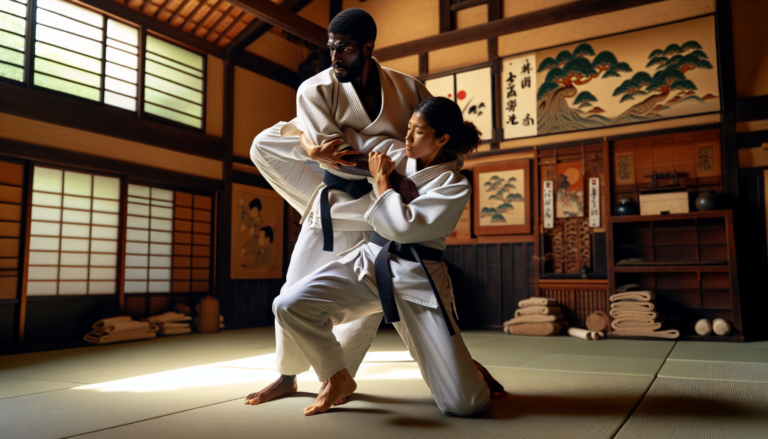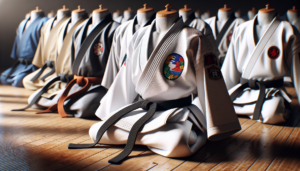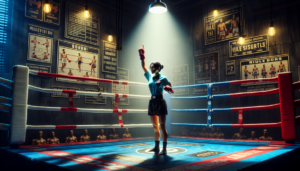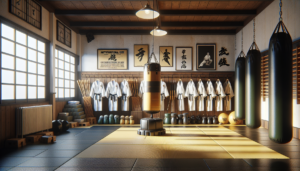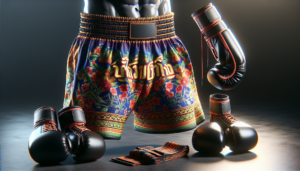Introduction to Jujutsu and Jujitsu
Jujutsu and Brazilian Jiu-Jitsu are two Japanese martial arts that have gained worldwide popularity. While they share some similarities, there are also significant differences between these two disciplines. Understanding the distinctions can help practitioners choose the style that best suits their goals and interests.
Defining Jujutsu
Jujutsu is a traditional Japanese martial art that focuses on close combat and self-defense techniques. It encompasses a wide range of skills, including throws, joint locks, strikes, and grappling. The primary goal of jujutsu is to use an attacker’s energy against them, allowing a smaller defender to overcome a larger assailant.
Jujutsu training emphasizes practical application and real-world effectiveness. Practitioners learn to defend against various attacks, such as punches, kicks, grabs, and weapons. The techniques are designed to neutralize an opponent quickly and efficiently, making jujutsu a valuable system for personal protection.
Defining Brazilian Jiu-Jitsu
Brazilian Jiu-Jitsu (BJJ) is a martial art that evolved from judo, with a heavy emphasis on ground fighting and submission holds. It was developed in Brazil by the Gracie family, who modified traditional Japanese techniques to create a unique combat system.
BJJ focuses on taking an opponent to the ground and using leverage, body control, and submission techniques to defeat them. Practitioners learn a variety of chokes, joint locks, and positions that allow them to dominate a fight on the ground. BJJ training is known for its live sparring sessions, called “rolling,” where students can test their skills against resisting opponents.
Historical Background
Origins of Jujutsu
Jujutsu has a long and rich history in Japan, dating back to the feudal era. It was developed by the samurai class as a method of close-quarters combat when weapons were not available or had been lost in battle. Over time, various schools and styles of jujutsu emerged, each with its own unique techniques and philosophies.
During the Meiji period in the late 19th century, jujutsu began to decline in popularity as Japan modernized and martial arts were seen as less relevant. However, the art survived and eventually gained renewed interest both in Japan and internationally.
Development of Brazilian Jiu-Jitsu
The history of Brazilian Jiu-Jitsu can be traced back to the early 20th century when a Japanese judoka named Mitsuyo Maeda traveled to Brazil. Maeda, also known as “Count Koma,” was a skilled martial artist who had trained under judo founder Jigoro Kano.
In Brazil, Maeda taught judo to a number of students, including Carlos Gracie. Carlos and his brothers learned from Maeda and began to modify the techniques, placing a greater emphasis on ground fighting and submissions. This new style became known as Brazilian Jiu-Jitsu, and the Gracie family played a key role in its development and promotion.
Techniques and Training
Jujutsu Techniques
Jujutsu encompasses a wide range of techniques, including:
- Throws and takedowns
- Joint locks
- Chokes and strangles
- Strikes and kicks
These techniques are designed to allow a practitioner to defend against various attacks and neutralize an opponent efficiently. Jujutsu training often includes kata (pre-arranged forms), self-defense drills, and sparring.
BJJ Techniques
Brazilian Jiu-Jitsu focuses primarily on grappling and ground fighting. Key techniques include:
- Takedowns and throws
- Guard positions (closed guard, half guard, etc.)
- Sweeps and reversals
- Submission holds (chokes, joint locks)
BJJ training emphasizes live sparring, allowing practitioners to develop their skills against resisting opponents. Techniques are honed through repetition and practical application.
Purpose and Focus
Jujutsu: Self-Defense and Personal Development
The primary purpose of jujutsu is self-defense. The techniques are designed to enable a practitioner to protect themselves in real-world situations. Jujutsu training also promotes physical fitness, discipline, and personal growth.
Many practitioners view jujutsu as a means of personal development, as it requires dedication, perseverance, and mental fortitude. The training process can help individuals build confidence, self-awareness, and inner strength.
BJJ: Sport and Competition
While Brazilian Jiu-Jitsu can be effective for self-defense, its primary focus is on competition. BJJ tournaments are held around the world, with practitioners competing in various age and skill divisions.
In BJJ competition, the goal is to submit your opponent or score points through positional control. Matches are typically divided into time periods, with the winner determined by submission or points at the end of the match.
Cultural Significance
Jujutsu in Japanese Culture
Jujutsu holds a significant place in Japanese heritage. It is deeply rooted in the warrior tradition of the samurai and has influenced the development of other Japanese martial arts, such as judo and aikido.
In modern times, jujutsu is practiced not only as a means of self-defense but also as a way to connect with Japan’s martial history and cultural identity. Many practitioners view jujutsu as a path to physical, mental, and spiritual growth.
BJJ in Brazilian Culture
Brazilian Jiu-Jitsu has become an integral part of Brazilian culture. The Gracie family played a significant role in popularizing the art, and their impact can still be seen today.
In Brazil, BJJ is celebrated as a national treasure, with countless academies and practitioners across the country. The art has also gained international recognition, with Brazilian practitioners achieving success in mixed martial arts (MMA) competitions.
Cross-Training and Effectiveness
Benefits of Cross-Training
While jujutsu and Brazilian Jiu-Jitsu have distinct focuses, cross-training in both arts can be beneficial. Jujutsu techniques can enhance a BJJ practitioner’s stand-up game and self-defense skills, while BJJ can improve a jujutsu practitioner’s ground fighting abilities.
Cross-training allows martial artists to develop a more well-rounded skill set, increasing their overall effectiveness in various situations. It also exposes practitioners to different training methodologies and philosophies, enriching their martial arts experience.
Effectiveness in Different Scenarios
The effectiveness of jujutsu and BJJ can vary depending on the context. In a self-defense situation, jujutsu techniques may be more applicable, as they are designed to neutralize an attacker quickly and efficiently. Jujutsu’s emphasis on striking and joint locks can be particularly useful in real-world encounters.
In a competition setting, Brazilian Jiu-Jitsu’s focus on ground fighting and submissions may give practitioners an advantage. BJJ techniques are honed through live sparring, allowing practitioners to develop a high level of proficiency in controlling and submitting opponents.
| Scenario | Jujutsu | Brazilian Jiu-Jitsu |
|---|---|---|
| Self-defense | Highly effective | Effective, but may lack striking defenses |
| Competition | Limited competitive opportunities | Highly effective in grappling competitions |
| MMA | Provides useful techniques, but requires cross-training | A core component of many successful fighters’ training |
Conclusion
Jujutsu and Brazilian Jiu-Jitsu are two distinct martial arts that have captured the interest of practitioners worldwide. While they share some common roots, their focuses and training methodologies differ significantly.
Jujutsu emphasizes self-defense and personal development, with a wide range of techniques designed to neutralize an attacker efficiently. Brazilian Jiu-Jitsu, on the other hand, focuses primarily on ground fighting, submissions, and competition.
Both arts offer unique benefits to practitioners, from developing practical self-defense skills to fostering personal growth and discipline. Whether one chooses to train in jujutsu, Brazilian Jiu-Jitsu, or cross-train in both, the journey of mastering these martial arts can be a rewarding and transformative experience.

